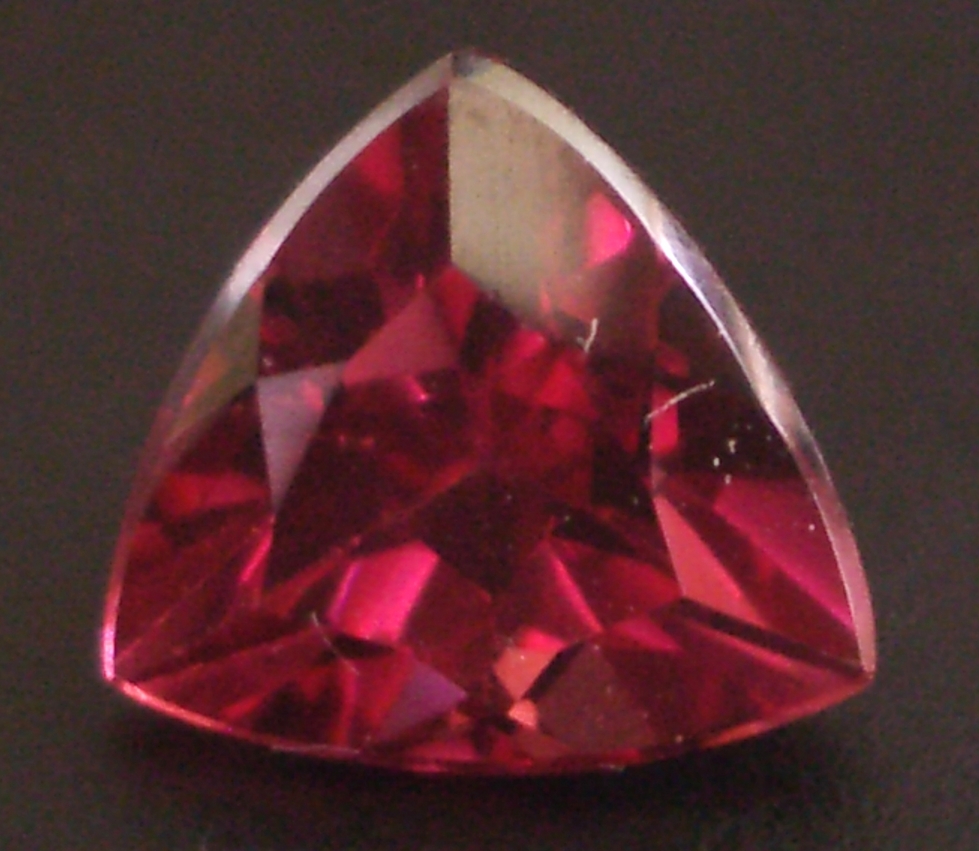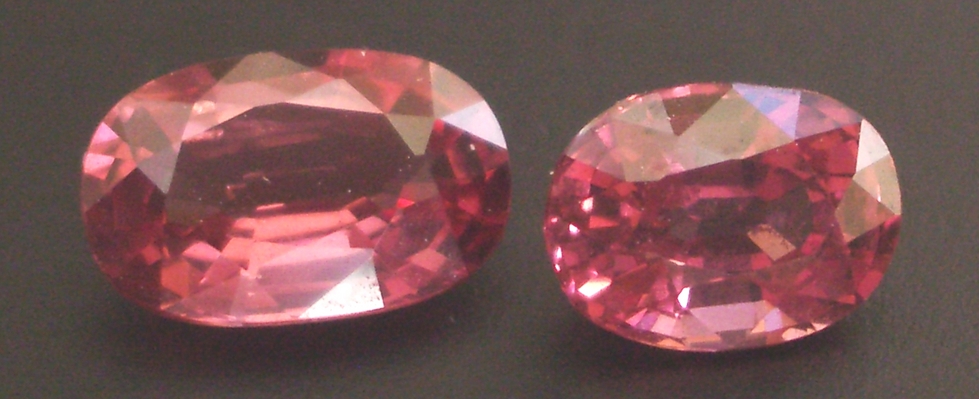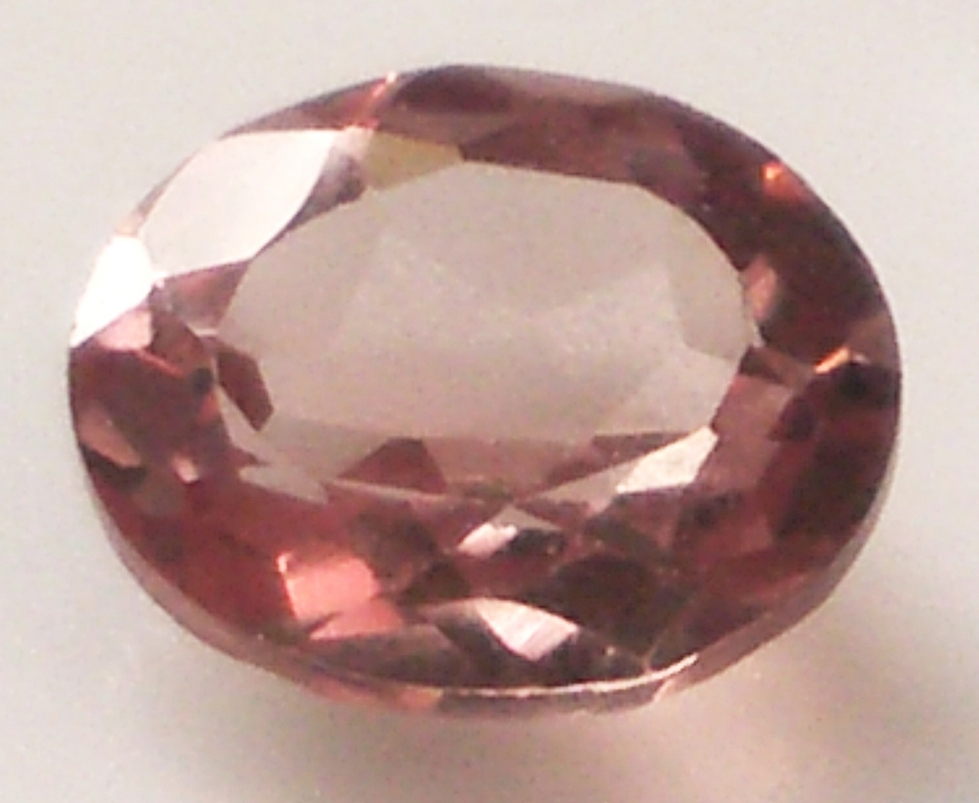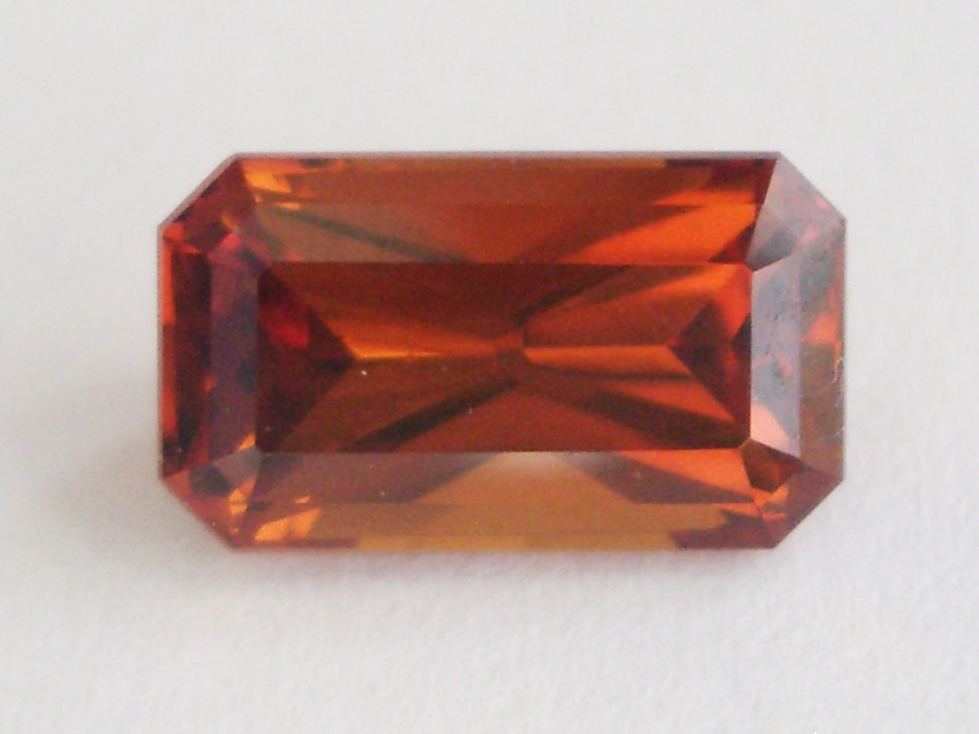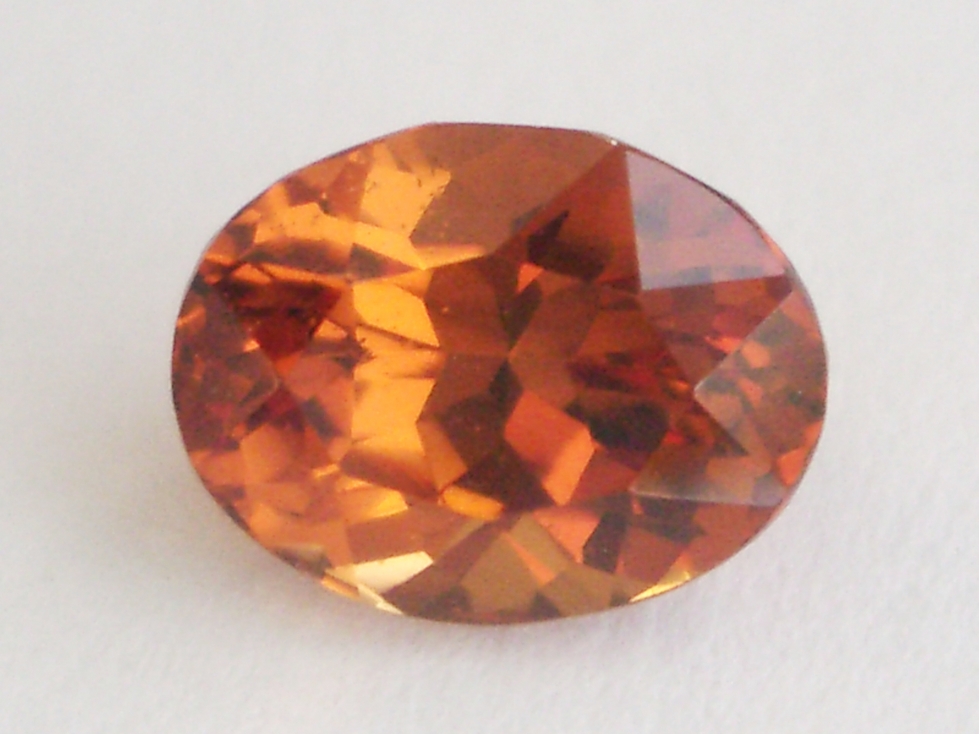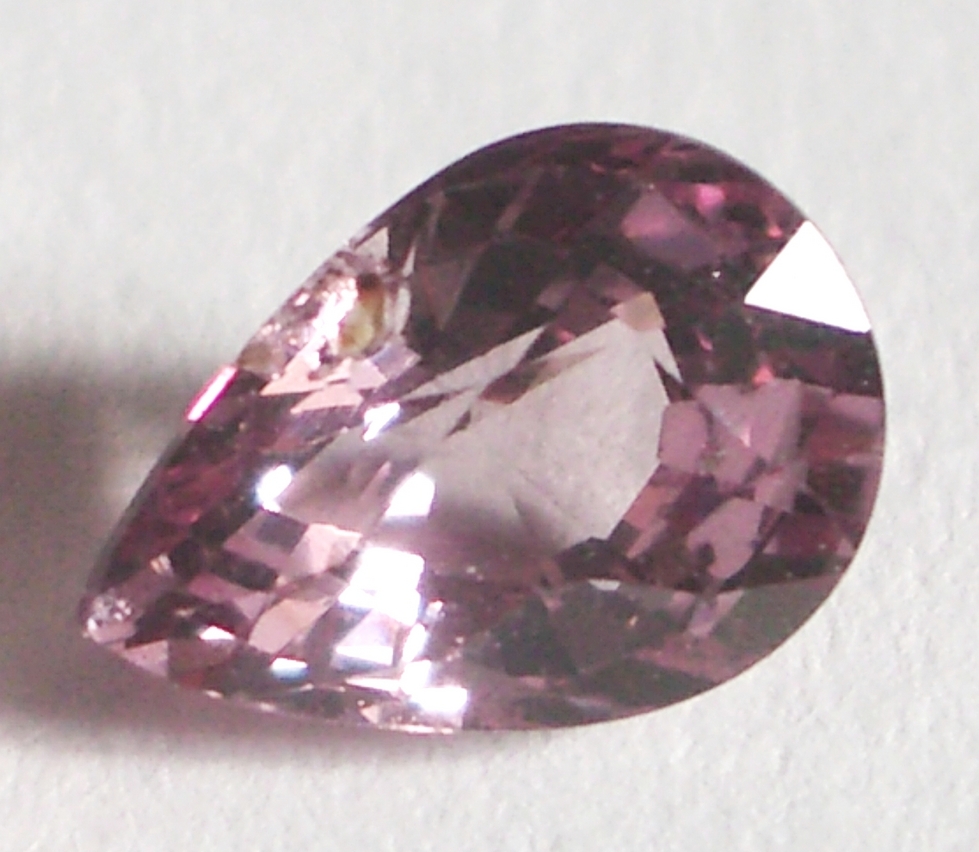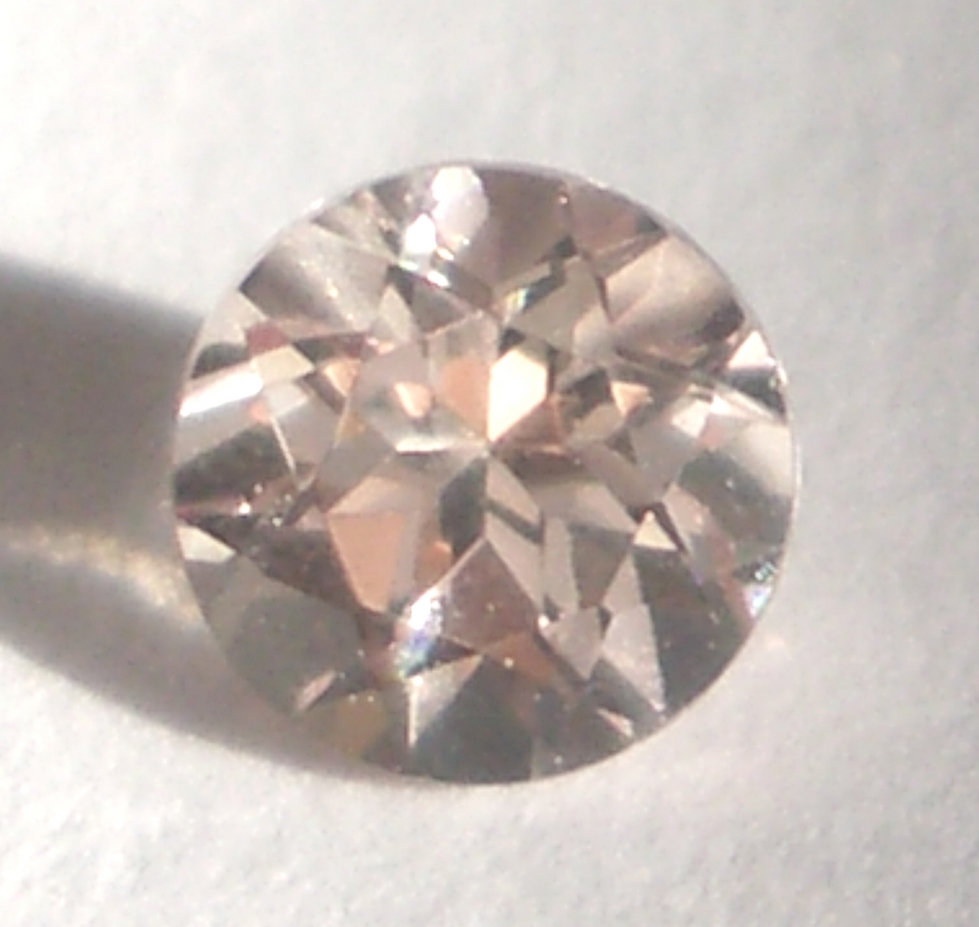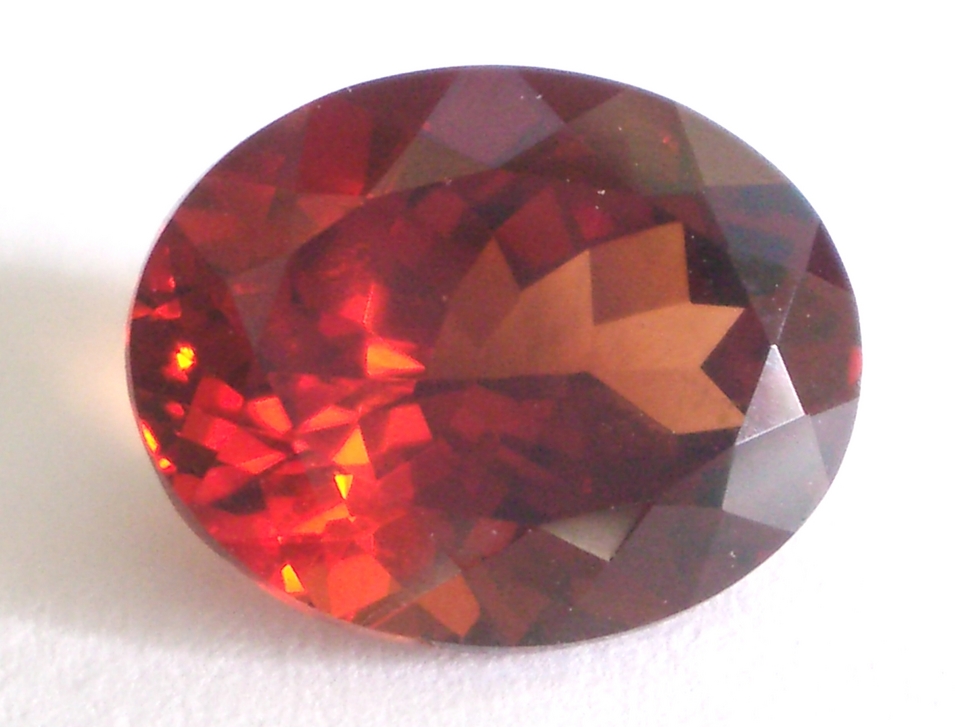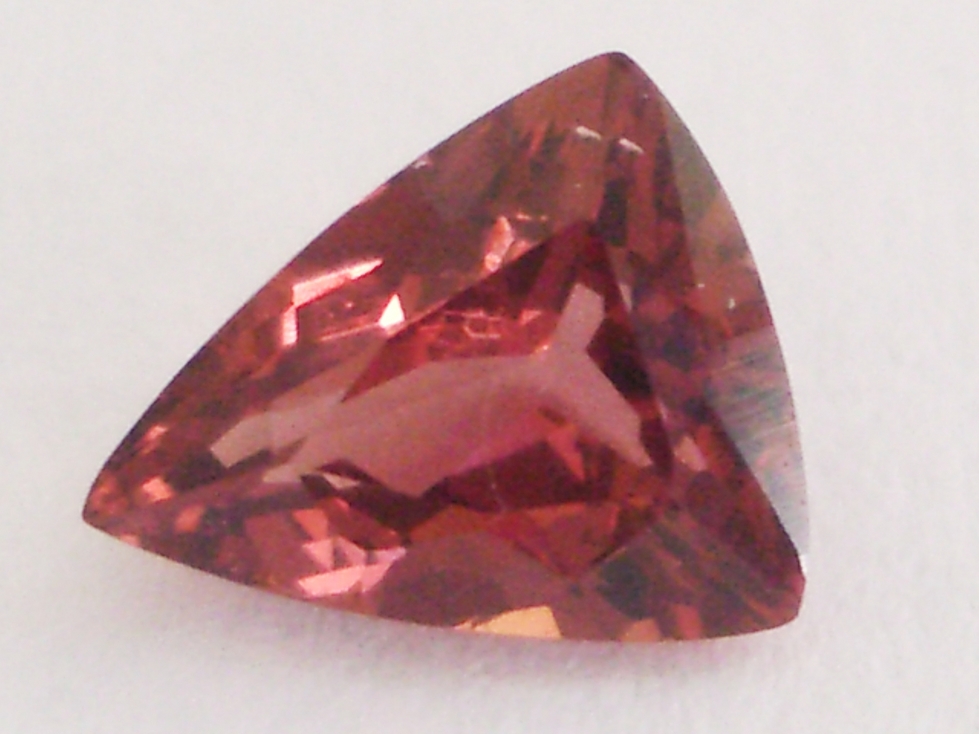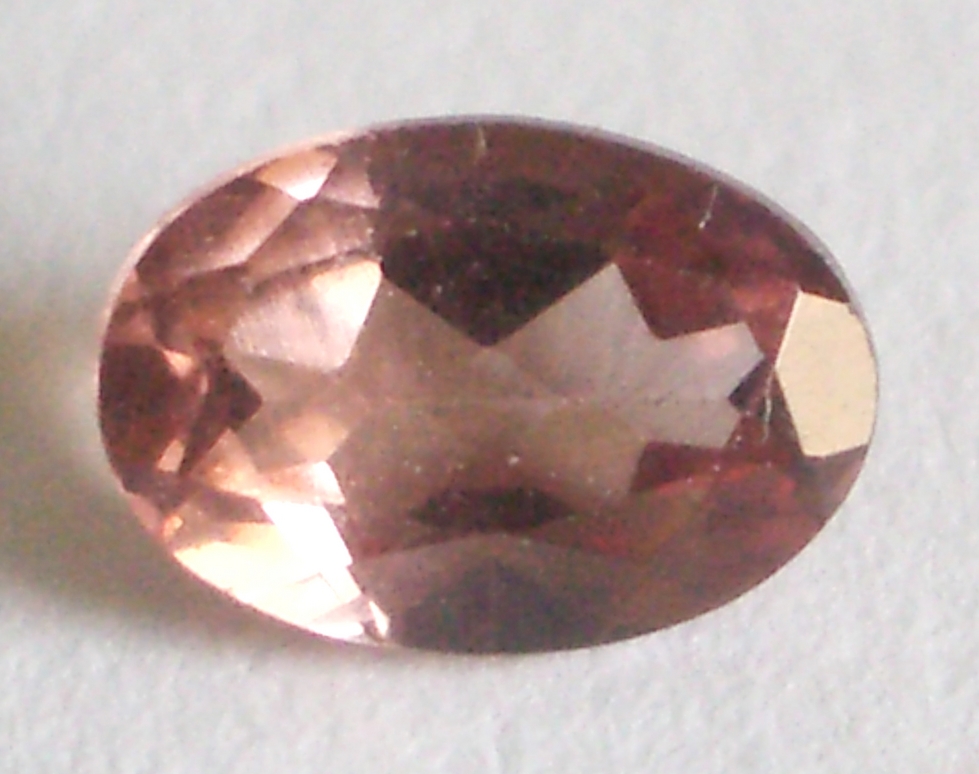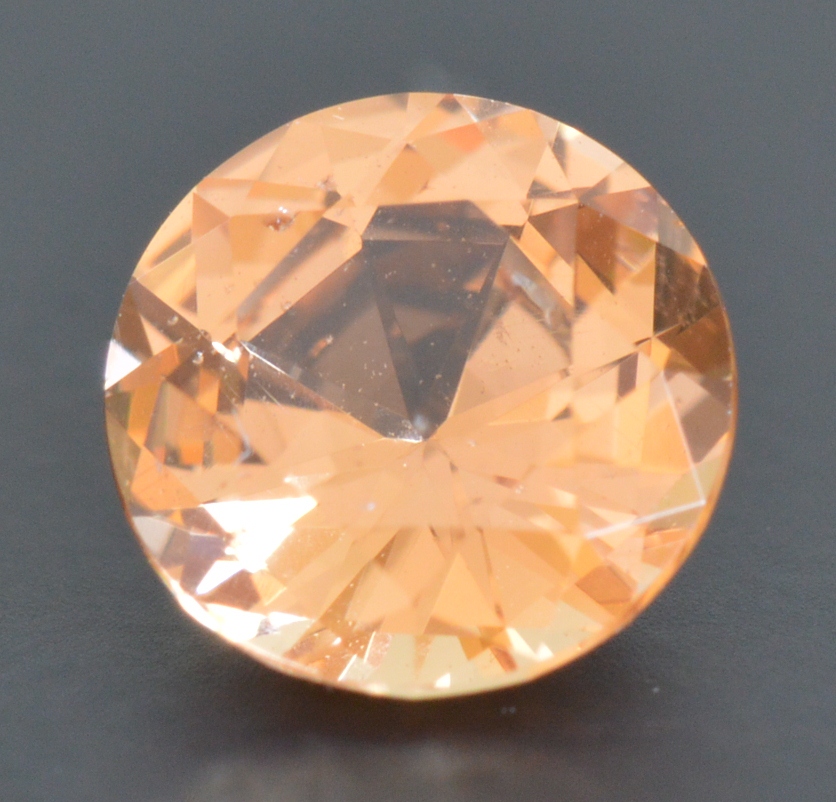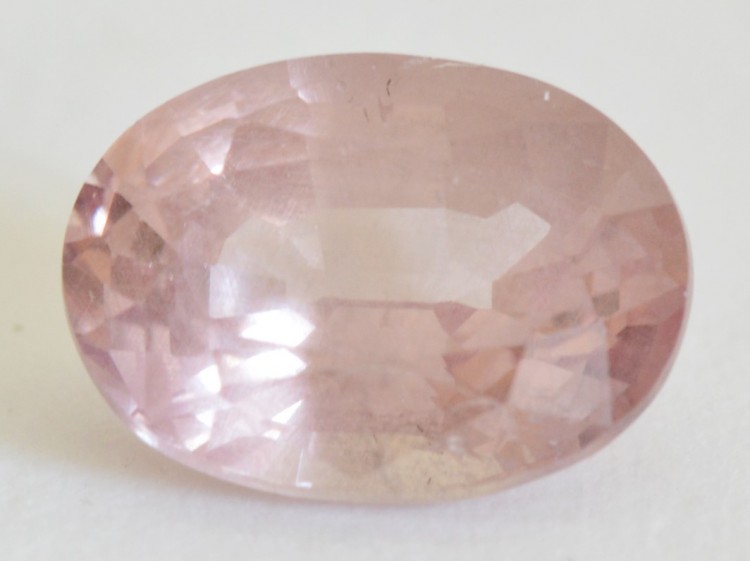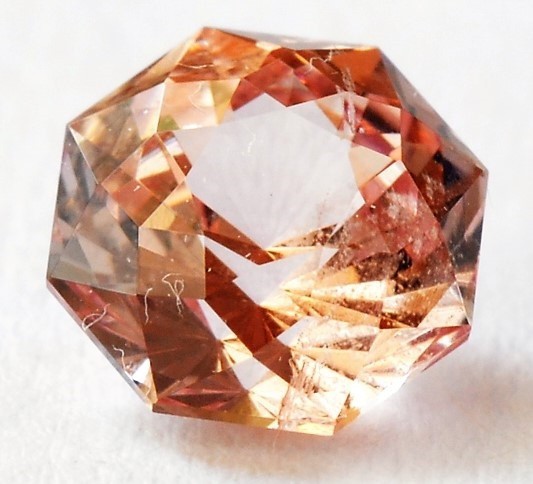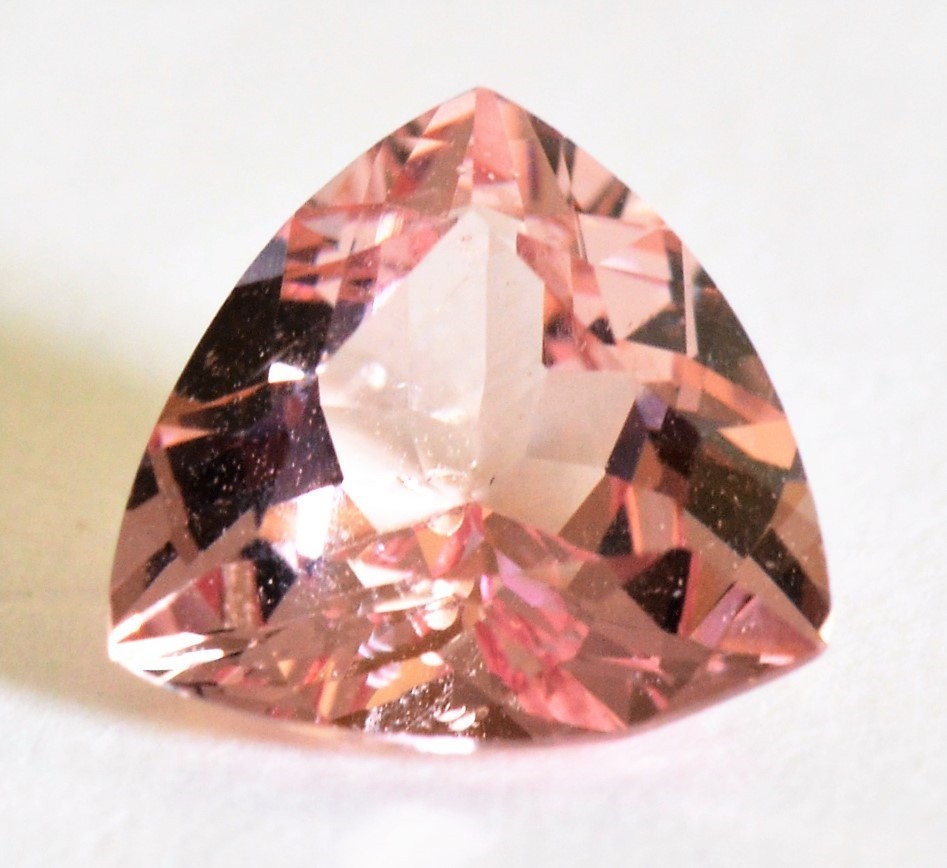Malaya Garnet
The term 'Malaya' is a Swahili word referring to the unusual appearance of these Garnets, and has nothing to do with the country of Malaysia. Most of these Garnets are mined in Tanzania and Madagascar. This researcher considers Malaya (a.k.a Malaia) to be primarily a variety of Pyrope that has unusual color: red, pinkish red, pink, brown, brownish pink, orange, brownish orange, orangey red and even near-colorless. Malayas are often lighter in tone than Standard Pyrope gems, and these lighter Malayas often exhibit color-shift and color change when viewed under incandescent light.
Malaya Garnets
Orangey Red Malaya
Graph of Malaya Garnets (RI range 1.735- 1.782, SI range 11.27- 33.24)
"Umbalite" Malaya
Light Pink Malaya
Malaya Garnets
© Kirk Feral 2011, All Rights Reserved. These materials may be duplicated for educational purposes only. No part of this website may be duplicated or distributed for profit, for commercial purposes, or for posting to another website without the expressed written consent of the copyright holder.
Malaya Garnets can also be light pink in color. Some pink Malayas may also have a slight amount of purple color (as in the pear pictured below), and show weak color shift by flashing to red in incandescent light. Light pink gems also show color change from pink in daylight to yellow in fluorescent light due to manganese. These are Pyrope-Spessartines, and the pink daylight color is due primarily to chromium rather than iron.
Masasi Bordeaux Garnet™
The Tanzanian Garnet trademarked in 2011 by Jewelry Television as Masasi Bordeaux Garnet™ (photo below left) would be classified by this researcher as a light-colored brownish orangey pink Malaya (general trade name "Imperial" Malaya). These Garnets are colored by manganese and chromium/vanadium. Magnetic testing (RIMS analysis) of the sample below left purchased from JTV reveals a composition of Pyrope and Spessartine in roughly equal proportions: 50% Pyrope, 49% Spessartine, and 1% Almandine. Some Grossular is also likely present.
Bright Orange Malaya
Pale Orange Malaya
Three Orange Malayas with Spessartine as the Primary Component
Near-Colorless Orange Malaya .22ct
(Tanzania)
Malayas are generally described by GIA as belonging to the Pyrope-Spessartine species, but our study shows that the majority contain significant amounts of all 3 endmembers (Pyrope, Almandine and Spessartine), while fewer are either Pyrope-Almandines or Pyrope-Spessartines. Other researchers who have performed chemical analyses on Malaya Garnets using an electron microprobe report that a small amount of Grossular (under 5%) is also commonly present.
Near-colorless Malayas are very rare. We have encountered only one example (pictured below), and such Malayas have not been described anywhere else in gemological literature. This near-colorless gem has a slight orange tint due to manganese. The small size and depth of the gem also contributes to a lighter appearance. This Malaya Pyrope contains the least amount of Spessartine of any orange Malaya we tested (62% Pyrope, 36% Spessartine, 2% Almandine). It has the same major composition as pale pink Malaya, but the concentration of chromium is too low to induce pink as the predominant color. However, there is sufficient chromium to induce pink fluorescence under longwave UV light.
Malayas with orange body color (due to Spessartine content) are far less common in the marketplace than reddish stones. Orange Malayas can be orangey red, pure orange, brownish orange, pale orange, and near-colorless with just a hint of orange. Some orangey red Malayas will shift color to brownish orange when viewed under fluorescent light. As already mentioned, most orange Malayas are primarily Pyrope, but a few have been found to be primarily Spessartine.
The 3 strongly colored orange gems pictured below are all from Tanzania. These contain a higher percentage of Spessartine relative to most other Malayas, but each still has Pyrope as the primary component. The dark reddish orange Malaya on the left contains nearly as much Spessartine as it does Pyrope (42% Pyrope, 39% Spessartine, 19% Almandine).
Two other Masasi gems from JTV tested were also confirmed to be Pyrope-Spessartines containing 1) 58% Pyrope, 41% Spessartine and 2) 62% Pyrope, 35% Spessartine respectively. Each also contained a small percentage of Almandine.
These compositions are similar to that of light "Imperial" Malayas and light pink Malayas. These Masasi Bordeaux Garnet™ gems are not unique to Tanzania or JTV. We found Malayas of similar color and composition originating not only in Africa, but also in Sri Lanka and Madagascar.
Generally, the graph points for Imperial Malaya composition are centrally located on the Pyralspite ternary, indicating a mixture of Pyrope, Almandine and Spessartine, with Pyrope as the primary component. The composition of "Imperial" Malayas can be loosely differentiated from 1) red Malayas, which tend to fall near the Pyrope-Almandine join (high Almandine), from 2) pale pink Malayas, which tend to fall near the Pyrope-Spessartine join (high Spessartine), and from 3) Malaya Spessartines, which fall to the right of the typical Malaya range due to higher Spessartine content.
"Imperial" Malaya
The Colors of Malaya
"Umbalite" Garnet (pictured below left) is a red Malaya Garnet from Umba Valley, Tanzania. Umbalite is a trade name based on locality and not a distinct variety of Garnet. These Garnets often have a hint of orange color mixed with the red. Also pictured below (right) is a brown Malaya Garnet from Kenya. Such brown body color is seldom seen in Malaya Garnets.
"Imperial" Malaya
Masasi Bordeaux Garnet™
Light Pink Malaya (Daylight and UV Fluorescence)
We encountered an unusual light orange Malaya Garnet (pictured below) that has a yellowish tint not found in other Malayas. This gem is primarily Spessartine in composition (52% Spessartine, 30% Pyrope, 18% Almandine), with body color similar to “Fanta” orange Spessartines, but with more yellow. It's possible the yellow color might be influenced by the presence of trivalent iron (Fe3+) from Andradite or even a charge transfer process involving iron or manganese. This Malaya was incorrectly sold as a regular orange Spessartine Garnet, but Spessartine would have significantly greater magnetic susceptibility than this gem. We refer to this gem as a Malaya Spessartine, in contrast to the 3 orange Malaya Pyropes pictured above.
Fluorescence in gems that are primarily Spessartine is rare. Surprisingly, this yellowish orange Malaya Spessartine (below) fluoresces red under long wave UV light due to chromium. As we would expect, it also shows a Pick-up response to a magnetic wand, due mostly to manganese content. Manganese does not quench fluorescence from chromium, but no other high-manganese orange Malayas that we have tested show fluorescence.
The likely reasons that yellow color (from manganese) and red fluorescence (from chromium) can coexist in this orange Malaya are: 1) the concentration of chromium is so low that it is not visible as red body color but is detectable under longwave UV light, and 2) the concentration of iron is low enough that it imparts little or no red body color, and is too low to quench all the fluorescence from chromium.
Light Yellowish Orange Malaya Spessartine
Daylight Color and LWUV Fluorescence
Though almost colorless, the small Malaya above has relatively high magnetic susceptibility (SI 17.62), containing enough manganese to be easily picked up by an N52 magnet. This is an indication that most of the manganese in this Garnet is cryptic (cannot be detected visibly as color but can be detected by magnetic response). Divalent manganese (Mn2+) is known to be a weak chromophore, and by itself may only contribute to color when in high concentrations or when involved in a charge transfer process. Although it has never been reported, we suspect that completely colorless Pyrope-Spessartines or Pastel Pyropes could exist if the concentration of manganese (Mn2+) was low enough and the concentration of chromium/vanadium was also very low or absent.
We found that some light pink Malayas from Tanzania fluoresce pink or red under longwave ultraviolet light due to chromium, as does the oval Malaya pictured below. Low iron content is what permits fluorescence in these Pyrope-Spessartine Garnets. Most other gemological sources describe Malaya Garnets as inert to UV light.
Brown Malaya
Pink-orange or “peach” colored Garnets from Mahenge, Tanzania are being marketed by the trade name “Mahenge Garnet". Two such gems (below) that we tested have similar composition to other light pink Malayas and to “Masasi Bordeaux” Garnets. These gems do not fluorescence under UV light.
"Mahenge" Garnet
Primarily Pyrope: On average, we found that Malayas contain a higher amount of Spessartine than do Standard Pyropes. Nevertheless, 95% of the Malayas we tested are primarily Pyrope in composition, and we classify these as Malaya Pyropes. Only 6 samples out of 108 Malayas in our study have Spessartine as the primary component. Two of those Malaya Spessartines were barely over the Pyrope-Spessartine boundary.
Below is the composition graph for 108 Malaya Garnets tested. A broad range of composition is represented in Malayas, with refractive index ranging from a low 1.735 to a high of 1.782, and susceptibility ranging from SI 11.27 all the way up to SI 33.24. All Malaya gems of average size show a Pick-up response to an N52 magnet.
"Mahenge" Garnet
“Imperial” is a trade name or marketing term that is most often applied today to Malaya Garnets that have a brown-orange-pink color reminiscent of the color of "Imperial" Topaz. "Imperial" Malaya Garnets have an intermediate tone that is neither overly dark nor very light.
Orange Malaya: In 2011, we were granted the opportunity to test an unusual large 10ct orange gem that we saw on display at the GIA museum, labelled as a Pyrope Garnet. The gem was part of the Gubelin collection donated by the eminent gemologist Eduard Josef Gubelin, and the size and color of the gem was unexpected for Pyrope. Our test results showed an RI of 1.759 (typical for Pyrope) and magnetic susceptibility of SI 21.70 (high for Pyrope). The gem was too large to show a Pickup response like most Pyropes.
Plotted on the RIMS graph, this amazing gem was confirmed to be a Pyrope with unusual brownish orange color. Our calculations show that the composition of this gem is 52% Pyrope, 18% Almandine and 30% Spessartine. The relatively high Spessartine content is responsible for the orange color and high magnetic susceptibility. Since encountering this gem, we have tested 6 other orange Malayas of the Pyrope species.
Orange Malaya Pyrope, 10.24ct
Gubelin Collection
RIMS Graph Showing 7 Orange Malaya Pyrope Garnets
Magnetism in Gemstones
An Effective Tool and Method for Gem Identification
© Kirk Feral
In 2022, a new find of pale pink Garnets from Kenya and Tanzania that fluoresce red under LWUV were given the trade name "Dragon Garnet" by Ravenstein Gem Company. Analysis by GIA of a rough sample of "Dragon Garnet" (Garnet with Apatite Inclusions) found that the pale pink Pyrope contained 29% Spessartine and only 2.6% Almandine. We tested one of these fluorescent "Dragon Garnet" gems from Ravenstein (pictured below) in 2025, and we classify it is a Malaya Pyrope similar to the pale pink oval above and some other pale pink Malays that we have tested. Our analysis of the "Dragon Garnet" trillion below shows that it, like the GIA sample, contains about 30% Spessartine (manganese) and very little Almandine (iron).
"Dragon Garnet", .39ct, Kenya

